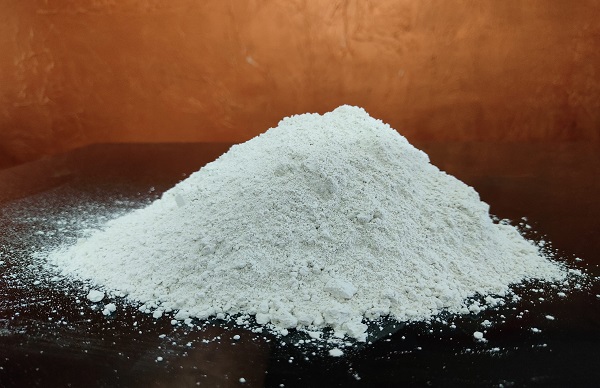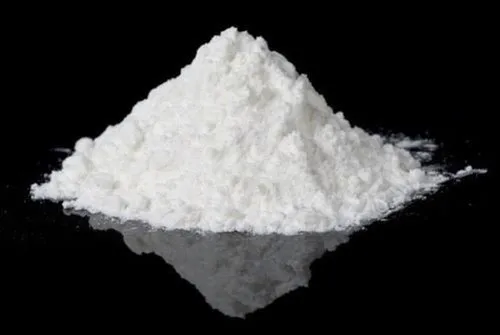
Is Calcium Carbonate the same as calcium from dairy products?
October 9, 2023
Can talc powder be used to prevent chafing?
October 23, 2023Introduction:
In the ever-evolving world of 3D printing, materials play a pivotal role in determining the quality and versatility of printed objects. While most of us are familiar with traditional 3D printing materials like plastics, metals, and ceramics, there's one intriguing contender that's been quietly making waves – quartz powder. In this blog post, brought to you by Sudarshan Group, we'll dive deep into the fascinating world of quartz powder and its potential in 3D printing.
Why Quartz Powder in 3D Printing?
Quartz powder, derived from the naturally occurring mineral quartz, is garnering attention in the 3D printing arena for several compelling reasons:
Exceptional Thermal Properties: It boasts outstanding thermal stability, making it suitable for high-temperature 3D printing processes like Selective Laser Sintering (SLS) and Selective Laser Melting (SLM). It can withstand the intense heat generated during these processes without deforming or degrading.
Chemical Inertness: It is highly chemically inert, meaning it doesn't react with most substances. Being experienced Quartz Powder Manufacturers we know that this property is a significant advantage in 3D printing applications, especially when dealing with reactive materials or in industries like aerospace and healthcare, where material purity is paramount.
Superior Mechanical Strength: When compared to traditional 3D printing materials, it exhibits superior mechanical strength, making it an excellent choice for producing durable and long-lasting components.
Electrical Insulation: It is an exceptional electrical insulator. This property is invaluable in applications where electrical conductivity must be minimized, such as in electronics and semiconductor manufacturing.
Now, let's explore some exciting applications and benefits of using quartz powder in 3D printing.
Applications of Quartz Powder in 3D Printing
Aerospace: The aerospace industry demands lightweight yet robust components. 3D printing with this mineral allows for the creation of parts that are not only lightweight but also incredibly strong, meeting the stringent requirements of aerospace applications. Additionally, its electrical insulation properties make it suitable for electronic components within aircraft.
Medical Devices: In the field of medical devices, precision and biocompatibility are paramount. It can be used to create intricate and sterile components for medical devices like prosthetics, implants, and dental fixtures. Its non-reactive nature ensures compatibility with the human body.
Electronics: Its electrical insulating properties are a perfect fit for electronics manufacturing. It can be used to produce housings, connectors, and other components that require high electrical resistance. Additionally, it can be utilized in 3D printing antennas and sensors, further expanding its applications in the electronics industry.
High-Performance Ceramics: It can be blended with other ceramic materials to create high-performance ceramic parts. These parts find applications in a variety of industries, including automotive (for engine components), electronics (for ceramic capacitors), and more.
Benefits of Using Quartz Powder in 3D Printing
Enhanced Durability: Components printed with quartz powder exhibit exceptional durability and resistance to wear and tear. This makes them ideal for applications where longevity is crucial.
High Precision: Its fine particle size allows for high-resolution 3D printing, resulting in intricately detailed and precise parts.
Chemical Compatibility: Its chemical inertness ensures that the printed parts are compatible with a wide range of substances, making it suitable for industries with strict material compatibility requirements.
Reduced Weight: For industries like aerospace and automotive, where weight reduction is a constant pursuit, its lightweight yet strong characteristics are highly advantageous.
Improved Electrical Properties: In electronics, the electrical insulation properties of quartz powder can lead to enhanced performance and reliability of printed components.
Environmental Benefits: Using this mineral in 3D printing can be more environmentally friendly, as it reduces waste and energy consumption compared to traditional manufacturing methods.
Conclusion
As the world of 3D printing continues to evolve, so does the range of materials at our disposal. Quartz powder, with its exceptional thermal stability, chemical inertness, and mechanical strength, is emerging as a game-changer in various industries. From aerospace to healthcare and electronics, the applications are vast and promising.
With the ability to create durable, high-precision components that meet stringent industry standards, quartz powder is poised to revolutionize 3D printing. Its unique combination of properties opens up new possibilities for innovation and efficiency across a wide range of sectors.



